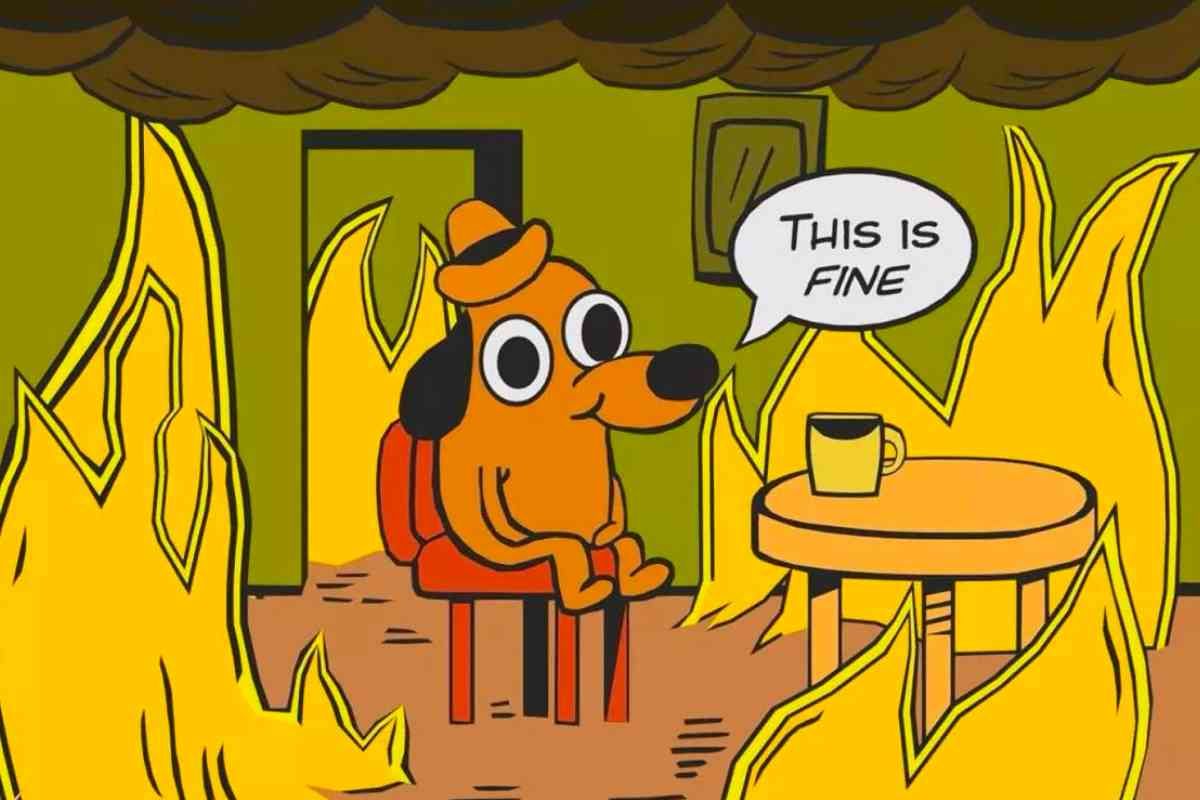A fellow nano user! There are dozens of us!
Hell yeah gotta embrace the pain of using archaic key bindings that you’ll forget until the next time you need to edit a file in the terminal, you must suffer like man. Modem and sane terminal editors are for pussies! If it doesn’t load in 0.01 ms it’s bloated… Whatever you do don’t install anything like micro, just keep suffering!
sudo = shut up dammit, obey!
Getting flashbacks of me trying to explain to a mac user why using sudo “to make it work” is why he had a growing problem of needing to use sudo… (more and more files owned by root in his home folder).
Sounds like a problem fixing itself, at some point MacOS is going to have problems if it can’t edit a config is my guess.
Had an idiot “fix” a permission problem by running “sudo chmod -R 777 /”
And that is why sudo privileges were removed for the vast majority of people.
seems reasonable to me, root is just a made up concept and the human owns the machine.
Oh… That sounds like a nightmare. How do you even fix that? There’s no “revert the entire filesystem’s permissions to default” button that I’m aware of
If you are lucky your system is atomic or has other roll back feature. Otherwise it’s reinstall time.
I guess you could set up a fresh system, run a script that goes through each folder checking the permission and setting it on the target system.
You restore the system from backup
as a GUI pleb i just doubleclick the file, which opens kate.
i edit the file and click save, get asked for my password
and all is fine.
sudo chmod -R 777 /
It’s safe because it’s sudo! Like sudo rm -rf /*
Back in the olden days we used to nfs mount every other machines file system on every machine. I was root and ran “rm -rf /" instead of "./”.
After I realized that it was taking too long, i realized my error.
Now for the fun part. In those days nfs passed root privileges to the remote file system. I took out 2.5 machines before I killed it.
Anyone remember that nvidia fix where a space slipped in like: rm -rf / nvidia ?
What happened with frog_brawler?
You mean
sudoeditright? Right?edit: While there’s a little bit of attention on this I also want to beg you to stop doing
sudo su -and start doingsudo -iyou know who you are <3Why memorize a different command? I assume
sudoeditjust looks up the system’s EDITOR environment variable and uses that. Is there any other benefit?I know this is a meme community, but a modicum of effort IS warranted IMO. https://superuser.com/questions/785187/sudoedit-why-use-it-over-sudo-vi is the top result of a search for “why use sudoedit” and a pretty good answer. “man sudoedit” also explains it pretty well, as shown by another commenter.
Why memorize a different command? I assume sudoedit just looks up the system’s EDITOR environment variable and uses that. Is there any other benefit?
I don’t use it, but,
sudoeditis a little more complicated than that.details
from
man sudo:When invoked as sudoedit, the -e option (described below), is implied.-e, --edit Edit one or more files instead of running a command. In lieu of a path name, the string "sudoedit" is used when consulting the security policy. If the user is authorized by the policy, the following steps are taken: 1. Temporary copies are made of the files to be edited with the owner set to the invoking user. 2. The editor specified by the policy is run to edit the tem‐ porary files. The sudoers policy uses the SUDO_EDITOR, VISUAL and EDITOR environment variables (in that order). If none of SUDO_EDITOR, VISUAL or EDITOR are set, the first program listed in the editor sudoers(5) option is used. 3. If they have been modified, the temporary files are copied back to their original location and the temporary versions are removed. To help prevent the editing of unauthorized files, the follow‐ ing restrictions are enforced unless explicitly allowed by the security policy: • Symbolic links may not be edited (version 1.8.15 and higher). • Symbolic links along the path to be edited are not followed when the parent directory is writable by the invoking user unless that user is root (version 1.8.16 and higher). • Files located in a directory that is writable by the invok‐ ing user may not be edited unless that user is root (ver‐ sion 1.8.16 and higher). Users are never allowed to edit device special files. If the specified file does not exist, it will be created. Un‐ like most commands run by sudo, the editor is run with the in‐ voking user's environment unmodified. If the temporary file becomes empty after editing, the user will be prompted before it is installed. If, for some reason, sudo is unable to update a file with its edited version, the user will receive a warning and the edited copy will remain in a temporary file.tldr: it makes a copy of the file-to-be-edited in a temp directory, owned by you, and then runs your
$EDITORas your normal user (so, with your normal editor config)note that sudo also includes a similar command which is specifically for editing
/etc/sudoers, calledvisudo🤪visudo is a life-saver since it adds some checks to prevent you from breaking your sudo configuration and locking you out of your system.
It doesn’t edit the file directly, it creates a temp file that replaces the file when saving. It means that the editor is run as the user, not as root.
why tho?
If it’s a file I have to modify once why would I run:
sudo chmod 774 file.conf
sudo chown myuser:myuser file.conf
vi file.conf
sudo chown root:root file.conf
sudo chmod 644 file.conf
instead of:
sudo vi file.conf

Inane. Intentionally convoluted, or someone following the absolute worst tutorials without bothering to understand anything about what they’re reading.
I have questions:
- Why are your configurations world readable?
- Why are you setting the executable bit on a .conf file?
- Why change the files group alongside the owner when you’ve just given the owner rxw and you’re going to set it back?
- If it was 644 before, why 774?
- Why even change the mode if you’re going to change the ownership?
- Why do you want roots vimrc instead of your users
- Why do you hate sudoedit
- Why go out of your way to make this appear more convoluted than it actually is?
Even jokey comments can lead to people copying bad habits if it’s not clear they’re jokes.
This was a joke right? I was baited by your trolling?







